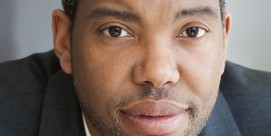In This Episode << SLIDE LEFT TO SEE ADDITIONAL SEGMENTS
Ralph Wood Extended Interview
Read more of the interview with Baylor University theology and literature professor Ralph C. Wood, author of FLANNERY O’CONNOR AND THE CHRIST-HAUNTED SOUTH (Eerdmans, 2004):
I had the great good fortune of going to a small Texas university called East Texas State College, and there I had the extraordinarily great gift of having had a Roman Catholic major professor in English, and he taught us all the great literary texts of both the American and English traditions. But during my senior year of 1962-1963, he brought Flannery O’Connor to our campus, her only Texas visit—1962. She would die two years later in 1964 of lupus at the age of 39. And in those days every single undergraduate at this little college was required to read A Good Man is Hard to Find, that collection of her first short stories from 1955, and I was just overwhelmed. I was struck by something really strange, something really odd, something also very hilariously funny, and something that took my own world of rural east Texas, small-town east Texas, not sophisticated, not cultured, but turned it into art of the greatest, highest kind. But it was also very deeply Christian, comic-Christian and southern in ways that in some sense defined me, and I said to myself, if I can spend the rest of my life trying to fathom a writer like Flannery O’Connor and other writers like her, I’d have my calling, and that’s how it’s turned out to be, thanks to this one professor at this one small state school.
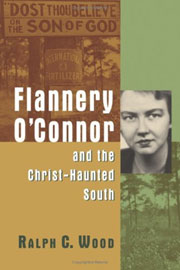 [Her work] can be appreciated, it can be read as a kind of document of its times, it can be read as an illustration of what a southern kind of literature of the 1950s would have looked like, but it can’t be really comprehended in the sense of grasped in all of its fullness apart from her Catholic Christianity. She said if I did not see through the lenses of my faith I’d have nothing to see. I’d have nothing to say. So quite literally there would be no Flannery O’Connor without her profound, life-centering faith in the Catholic Church and the Catholic tradition and the Gospel. You don’t have to have Christianity to understand Shakespeare, although it would help you understand a great deal of Shakespeare, but if you don’t understand O’Connor in the light of her faith, you really don’t understand her. You misunderstand her.
[Her work] can be appreciated, it can be read as a kind of document of its times, it can be read as an illustration of what a southern kind of literature of the 1950s would have looked like, but it can’t be really comprehended in the sense of grasped in all of its fullness apart from her Catholic Christianity. She said if I did not see through the lenses of my faith I’d have nothing to see. I’d have nothing to say. So quite literally there would be no Flannery O’Connor without her profound, life-centering faith in the Catholic Church and the Catholic tradition and the Gospel. You don’t have to have Christianity to understand Shakespeare, although it would help you understand a great deal of Shakespeare, but if you don’t understand O’Connor in the light of her faith, you really don’t understand her. You misunderstand her.
There can be a kind of reductionism and too quick reading of her in Christian terms. She, by the way, did not want to be known as a Catholic writer; she wanted to be known as a writer, that is to say as a woman whose work had its own excellence, that could stand on its own legs, that did not have to be propped up with the crutches of her faith as if it would crumble without it, so in that sense she is not a Catholic writer, and those that say there’s more to her than simply finding Christ figures—there really are almost none, or of tracing down Christian themes—is to misread her, I think they have a point, and she would agree to that point insofar as she said this: remember that reading literature is not like algebra, it is not a matter of finding x, that is to say the kind of extractable meaning that you can lift out of the text—that’s an Enlightenment notion by the way. Instead, she said once you find x you can forget it. A literary text is the embodiment of a whole way of experiencing the world, and therefore it’s going to have depth after depth, layer after layer, but for O’Connor there is nothing larger than the Gospel, nothing larger than the faith, so that those who say you must not reduce her to her faith are engaged in a fundamental category mistake. When you’ve got, as the Book of Colossians says, Christ present in the presence of the cosmos, then in a real sense the Gospel is larger than the universe, so there’s nothing outside it, grander than it, larger than it, and therefore she could encompass all that counts against it. There’s nihilism running rife through her stories. If you don’t pick up that nihilism, you’ve missed it. If you make a kind of sweet, easy Christian reading of her, you’ve missed it. But you can’t get to the core of her apart from her Christianity.
She wrote two novels, two collections of short stories, one collection of essays, and of course her very important collected letters called The Habit of Being, but out of that small body of work grew a kind of presence that simply cannot be exorcised. You cannot get rid of her, because when you read her you know that no one else could have written that work. In fact, Evelyn Waugh, not knowing that Flannery was a woman, said of her what he thought was something very complimentary but was in a certain way an insult, he said no woman could have written this work. Now Waugh of course got it really wrong, but his point was there’s something strange, spare, odd, alarming, troubling, but above all unforgettable about her. You cannot walk away from these stories saying, well, I’ve got O’Connor down, I’ll move on to something else, and so people keep returning to her. There are more than 50 books written on O’Connor now. She was the second writer in the Library of America series from the 20th century to be included. Faulkner was the first. That’s remarkable, that the second writer in that whole important series from the 20th century was Flannery O’Connor. So there’s something that’s perduring, lasting about her that’s just not going to go away.
The assumption made by most of her readers in the early ’50s when she came into print was that here we have another H.L. Mencken, here we have another Sinclair Lewis, here we have a sophisticate, and above all a Catholic sophisticate, making fun of these dumb, backwoods, benighted, backward fundamentalists who are screaming “Jesus saves,” who are doing wild and hairy things like handling snakes and so forth, so she must be mocking, she must be having fun with them, she must be satirizing them in the fashion of Mencken or Sinclair Lewis. Of course, Mencken called the Bible the nastiest name he could think of, you know—not the Cotton Belt, not the Tobacco Belt, but the ugly word, the Bible Belt. And for O’Connor that was the glory of her region, these people, backwoods—not our contemporary fundamentalists, not those that have moved into political power. These were the emarginated people in the sidelines of southern life in small, out of the way places, never making it into the news, never wanting to get into the news, never trying to push political candidates forward, never using the Gospel for some so-called larger political end. They were, instead, obsessed with God’s own self-identification in the Jews and in Jesus and in the book that is that story of self-identification, and so she saw—look, these are my brothers and sisters, they are as unlike me as they can be when it comes to the church and its sacraments, but they are a whole of a kind of sweated Gospel, a Gospel that takes God and God’s world with the utmost seriousness, and therefore I’ve got to attend to them, I cannot dismiss them, and so she winds up saying these are people after my own heart, and I want to write about them sympathetically, and of course that just stunned her secular audience, as they couldn’t understand at all what she was trying to do, when she was saying I think, in fact, what St. Thomas says. She says most sins are committed by acts of immoderation, of excess. There’s one and one only quality that can never be sufficiently immoderate, and that’s the love of God. And in fact Thomas says you cannot love God moderately, you cannot love God in a kind of lukewarm fashion. We love God either absolutely or not at all. And she saw in these backwoods, southern, I call them folk Christians more than fundamentalists, that kind of completely radical love of God in their own way.
Now she sometimes criticizes them. Criticism and mockery, of course, are two different things. Mockery is to stand outside of and above and look down upon in a kind of scorn and disdain for that which you think is less than you are. Criticism is from the inside, trying to say, look, here’s something really important but that needs qualification, modification, and so there are stories in which she comes down on the anti-sacramental character of southern folk Christianity, the most powerful of which is called “Parker’s Back,” that story about a man who has—long before tattoos were de rigueur and fashionable—who has the figure of Jesus Christ tattooed on his back, and it is for that reason his wife rejects him. She cannot stand the idea of Jesus being figured image in any kind of incarnational way, certainly not in her church, and least of all on her husband’s back. So [O’Connor’s] critical of the anti-sacramental quality of that kind of southern folk Christianity, but she is not dismissive, never dismissive.
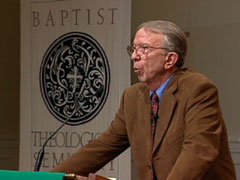 Prof. Ralph Wood |
When these people have profound encounters with a living God into whose hands it is a fearful thing to fall, since the Book of Hebrews, they don’t know what to do with it. They say there are no structures, there are no forms, there are no disciplines, there are no sufficient habits in which to place these radical encounters with God, and so they go off and do nutty things. For example, when I was teaching in the south, a fellow up in Boone, North Carolina, decided that since we hear our Lord say if your hand offends you, cut it off, went to the shop at Appalachian State University, got a saw out, and cut his hand off. Well, again, O’Connor would not make fun of that. She would criticize that and say, again, his Christian world did not give him the forms in which to put a radical kind of Christianity, and so she’s critical of that lack of form, but not the lack of substance. Those are two very different things. She admires him for having very great substance. She said those who were such drastic Christians, if they had been in the Catholic world would have wound up in a monastery where they could have had their lives given a certain kind of shape, as they couldn’t in do-it-yourself religion.
Thomas Merton, in a famous phrase, says that the command “love God” has now the force, roughly, of “eat Wheaties.” It’s just another empty phrase. But for O’Connor, “grace” and “mystery” are not empty phrases. They are something than which there is no greater. The grace of God, for O’Connor, she said, must wound before it could heal. What we would want is the kind of grace that comforts, cheers, that always lifts up but never casts down. She says we want a Christianity that’s like a warm blanket, when in fact the Gospel is a cross. Of course, she’s absolutely right about that, so for her grace means the cross entering the world in such a fashion as to bring radical judgment, that is to say wounding, but of course far greater and deeper healing, that is to say, gracious redemption. Likewise with the word mystery: mystery does not mean for her a kind of a fuzzy, foggy, gooey something or other. It’s a very specific term for her. For her the word mystery means that which is inexhaustible in our knowledge of God, that the deeper we go in understanding who the self-declared, self-revealed God is, the more there is yet to understand, so that the greater our knowledge of God, also the greater our ignorance of God, so that we know only a thumbnail of who God is. So mystery for her is, therefore, an inviting term. It is not a kind of term that stops conversation. It’s not that which is just a puzzle, an enigma to which you throw up your hands and say, well, that’s a mystery. On the contrary. Another translation of the word mysterion in Greek is not only mystery but sacrament, so for her the sacraments invite ever deeper, inexhaustible exploration, knowledge, truth, wisdom, and of course humility, because the more you understand the less you know you really understand.
The violence puts off many readers. A lot of folks encounter it and say I want no more of that. There’s enough violence in the world around us, why go read a writer where in her most famous story five people get killed? Where the protagonists of both of her novels turn out to be murderers, where almost every story ends in death. In fact, she said, I can’t imagine many good stories that don’t end in death, because she says death has always been like a brother to my imagination, and what she meant by that, of course, was that in the moment or the fact of death we bring our lives to the point of culmination, either of course in fullness, giving back to God, like in the parable of the talents, or squandered with nothing to return. So death is for her a moment of immense focus, clarity, and sharpened culmination, and therefore for her death was a thing that Christians are meant to live toward. I point out to my students, we celebrate the saints on their death days, not usually on their birthdays, so that violent death, as it were, is a way of speeding up that process, of making what would often be a long and slow and unprepared-for moment supremely well prepared for, either by suffering a violent death, or alas by committing a violent act of crime, murder, that makes you refocus. But those deaths are never gratuitous in O’Connor. In fact, she had a witticism I often repeat to help students. She said now remember, a lot of people get killed in my stories, but nobody gets hurt. And what she meant by that was that nobody’s tortured. Almost everyone goes to their deaths graciously. Think of that story where even the mother whose child is about to be murdered goes off to her death in a kind of accepting way, so that deaths are never there for their own sakes so that she can make our skin crawl. No one’s fingernails are plucked out, as they are in Dostoevsky, for example, no one made to squirm before being killed, but instead brought to moments of immense clarity about who they are in final, ultimate, metaphysical, theological terms. Now, that also happens to echo the fact that ours is the most violent world in the history of the human species. O’Connor knew well, though she did not live to witness the pronouncement of Pope John Paul II when he called ours the culture of death. She knew ours was the culture of death, that more people were killed by violent means in the 20th century than in all the preceding centuries combined. One of my students calls it the age of ashes, the century of blood, and that there is built into our existence a fundamental violence, an antagonism that causes people to kill each other in mass numbers, usually nation-states and their omnicompetent governments killing their own citizens, but also simply a widespread kind of seething fury that underlies everything, because of course that’s the real mark of God’s absence from our world. That’s the nihilism she thought characterizes our world. So she wanted to confront that nihilism, but not with stories that are nice, that are sweet, that are saccharine, that say don’t be violent, be good. No, she meets violence with violence, but the violence she meets it with is redemptive violence, it’s the violence where people come to see themselves before God, and always when they see themselves in that form, maybe one exception, they come to the moment of repentance, to a moment of grace, so that a kind of horrifically destructive violence is answered by a wondrously redemptive, constructive violence. After all, the cross is the ultimately violent act, where we killed God himself, so you can’t have a Christianity that isn’t in some sense spiritually violent, in that if we were doing real warfare with all that counts against God, there’s going to be something internally violent, so most of her characters undergo an internal warfare more than an external kind of violence.
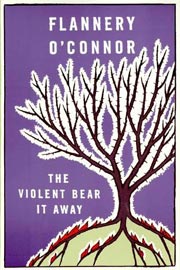 Mayhem, murder, a woman being gored by a bull that gets loose, a grandmother being shot 3 times in the chest by a mass murderer, a little boy drowning himself to be really baptized, on and on and on—those stories are also hilariously comic for two reasons. The most obvious reason, that O’Connor simply understands what is really comic about ordinary southern, country, untutored life. Southerners tell stories, southerners make jokes, southerners are just funny, and a lot of her funniest lines are from these characters. For example, at the end of The Violent Bear It Away, where the protagonist is, to his great surprise, confessing that he has in fact drowned a boy, tells this to a truck driver he’s hitched a ride with: “Hey man I just drowned a boy,” And the truck driver says, “Only one?” Well, you see, that’s not a sophisticated humor. O’Connor really liked Mark Twain, a kind of slapdash bang ’em up humor, and it’s usually out of anecdotes like that that things are funny. For example, in her story with the famously ugly title, “The Artificial Nigger,” a grandfather decides to take his son into the city to show him what a wonderfully common and safe world they live in out there in the rural countryside, whereas the city’s going to be really forbidding, and the boy will never want to go there again. He says I’m going to teach you how you never will get lost out here, and the boy says, “Out here there ain’t nowhere to get lost.” So it’s one-liners like that that are very funny. But of course O’Connor, as a deeply Christian writer, knows that comedy is the ultimately Christian category. When Dante writes his great book, he calls it the Commedia, the Comedy, because comedy is a literary form that always issues in life. It usually ends with a marriage. Of course, the New Testament ends with the great marriage feast of the lamb, with life coming into the world, with new birth, with resurrection. Tragedy, though a very great, noble art form, ends in death, and in some sense in defeat, usually in ennobling death, but still in a sense that finally things are to be despaired over. So it’s comic in that ultimate sense, that you can laugh not at O’Connor’s characters so much as with them, because you see—that we’re like them and that we need to undergo the same radical renovation they undergo.
Mayhem, murder, a woman being gored by a bull that gets loose, a grandmother being shot 3 times in the chest by a mass murderer, a little boy drowning himself to be really baptized, on and on and on—those stories are also hilariously comic for two reasons. The most obvious reason, that O’Connor simply understands what is really comic about ordinary southern, country, untutored life. Southerners tell stories, southerners make jokes, southerners are just funny, and a lot of her funniest lines are from these characters. For example, at the end of The Violent Bear It Away, where the protagonist is, to his great surprise, confessing that he has in fact drowned a boy, tells this to a truck driver he’s hitched a ride with: “Hey man I just drowned a boy,” And the truck driver says, “Only one?” Well, you see, that’s not a sophisticated humor. O’Connor really liked Mark Twain, a kind of slapdash bang ’em up humor, and it’s usually out of anecdotes like that that things are funny. For example, in her story with the famously ugly title, “The Artificial Nigger,” a grandfather decides to take his son into the city to show him what a wonderfully common and safe world they live in out there in the rural countryside, whereas the city’s going to be really forbidding, and the boy will never want to go there again. He says I’m going to teach you how you never will get lost out here, and the boy says, “Out here there ain’t nowhere to get lost.” So it’s one-liners like that that are very funny. But of course O’Connor, as a deeply Christian writer, knows that comedy is the ultimately Christian category. When Dante writes his great book, he calls it the Commedia, the Comedy, because comedy is a literary form that always issues in life. It usually ends with a marriage. Of course, the New Testament ends with the great marriage feast of the lamb, with life coming into the world, with new birth, with resurrection. Tragedy, though a very great, noble art form, ends in death, and in some sense in defeat, usually in ennobling death, but still in a sense that finally things are to be despaired over. So it’s comic in that ultimate sense, that you can laugh not at O’Connor’s characters so much as with them, because you see—that we’re like them and that we need to undergo the same radical renovation they undergo.
“The Artificial Nigger” has caused a great deal of consternation among her readers. It means that her work is often not taught in high places in American academe, because that word is so offensive, and I confess it is offensive, it should be offensive, but it’s absolutely appropriate to the story and to the characters who use it, just as in Huckleberry Finn the word appears in an absolutely appropriate way by Mark Twain. For Flannery O’Connor, race was indeed the curse of the South in the sense that it was the single most important test which we as white Christians failed. Walker Percy of course says the same thing. She approaches the race question, however, not in the fashion that most people would expect, that is to say I can’t remember many, if any, places in her letters, which were voluminous, her using the phrase “civil rights,” because as Alasdair MacIntyre points out, rights are an invention of the 17th and 18th centuries. For O’Connor, the mistreatment of black people is a violation of their being creatures made in the image of God. Therefore racial injustice is a horror to God, first of all, and of course to blacks, and therefore to be corrected. She supported, and I think especially in a late letter she supports Martin Luther King, because King is dealing with that question from within the church. King is appealing fundamentally to the Gospel saying, look, this is not how Christians treat their fellow Christians, and I think that was more or less O’Connor’s own approach. She did not like topical art. She says that “topical” is poison, and she meant by that if you set out to make a point in a story, it’s no longer a story. She says I always begin a story with some complex situation, and I ask, how in the world do people get into that jam, and how in the world might they get out? So she deals with the race question, the race problem in her stories in two ways. One, this is what is surprising, by showing the way in which racial injustice is a symptom of a larger disease. That’s a crucial distinction for her. The larger disease is a pandemic sinfulness of the human race in our fallenness, and that means for her everybody is sick. That means that black people who are sinned against are still sinful. That means that civil rights workers who are there seeking to overcome racial injustice are still sinners, no less than their white persecutors, and so she writes about the sinfulness, not so much in blacks, although she has some as they’d say “sorry blacks” in her stories, but she writes about self-righteous racial reformers who can go off and “do good,” so called, away from home, but who cannot attend to the people who are right at their feet. That is to say they cannot deal with their own mothers or fathers or brothers or sisters in such a way as to be redemptive and reconciled. So she’s concerned about the way in which, unless we’re very careful, we divide the world up into what someone said is the easiest moral question of the world, you know. Percy said if blacks are being mistreated, stop mistreating them. That’s pretty simple. But the complex matter is this matter of sinfulness that infects all of us, including, as I’ve said, those who are victimized and those who are trying to liberate them, the blacks, from their injustice. But the other way she treats the racial question, and far more deeply in my view, is to show the way in which black people have often been the means of redemption to white people because of the way in which blacks have born their suffering. In the South, almost all blacks are Christians, and therefore they have acquired something from the Gospel that has enabled them not to strike back, not return evil with evil, not to say “the fire next time.” O’Connor knows that justice delayed is in a real sense justice denied. But she also knows that justice too quickly corrected can mean new injustice created. You can drive out one devil by welcoming in seven devils through the back door. So in these other kinds of stories what she does is show moments of a strange kind of racial redemption, and she was moving into new territory at the very end of her life. The story that was left on her desk unfinished was called “Judgment Day,” in which a black man and a white man are living together, something really radical and strange in O’Connor. But far more importantly to me than that story is the one with the offensive title, “The Artificial Nigger,” where in very subtle ways most of my students don’t get, because it is so subtle, we confront a black Madonna by way of a large black woman standing in a door in the ghetto, and this young boy named Nelson, who’s never been in a church where there’s a figure of Mary, never seen a Madonna, has an instinctive sense that this must be what the mother of God would be like. He doesn’t use any kind of language in this story, but he has an instinctive sense that there’s some kind of accepting, embracing love of God that has this maternal quality that he’s never known. But more importantly, the story ends with a terrific sense in which this grandfather named Mr. Head and this grandson named Nelson have sinned against each other in that most diseased sort of way, the most fundamental way, violating each other, but they’re brought to their reconciliation before a broken Sambo. Now, for a northern audience that will have to be explained, that in the South, less and less now, thank goodness, many whites had black Sambos on their lawn, usually at the gate. They took two forms. Usually one would be a black jockey, holding a lantern, and was thus serving as the light post for entering the driveway. The other and far more degrading is the kind they encounter, and that’s of a black eating watermelon, which of course was a very demeaning way of ridiculing blacks as unworthy to do anything but eat watermelon and spit the seeds. But in this case, the black Sambo has not been attended to well. The watermelon has turned brown, so it’s barely discernable as watermelon. One eye has been chipped out so that you can’t really see that this is an ordinary face, and the back of the statue has come loose from its attachment, and so it’s leaning over, its mouth turned down, its eye chipped out. It becomes a crucifix before which these two terrible sinners against each other are reconciled, and there can be no other crucifix for this white man and this white boy than that figure by a black Sambo. I think that’s why it was her favorite story. It’s her largest embodiment of the Gospel in fiction, in ways that are not at all preachy or sermonic or point-making.
For O’Connor the term sacramental is not a loose and baggy term that applies to any sense of something slightly holy anywhere. It means instead something in the world that has discernable analogies with what lies beyond the world, so you can see visible signs of God’s invisible grace if you have the lenses for seeing them. Those occur in a lot of places in O’Connor’s fiction, for example, very often in a tree line, which in southern Georgia and Florida you often have, that stretches on and on to infinity. That becomes for her a moment of discerning what lies beyond us. The trilling of a bird in a lonely woods makes you pause: Why four notes rather than three? Why that noise and that alone? Again, it calls into mind a world beyond this one. But above all just silence.
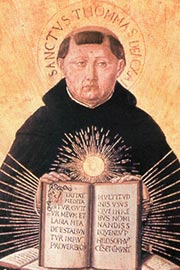 St. Thomas Aquinas |
Silence was, for her—as St. Thomas said, silence honors God, and so many times her protagonists and characters come to their moment of awareness of who they are in silence, all of those things having the sacramental quality. Now, on the other hand, the word sacrament means something very different. It’s not an adjective but a noun, and of course as a Catholic, for her there are seven sacraments, and that means therefore that sacrament is an act in which something happens, in which what was not present is made present, and the most famous incident about that business is a famous New York dinner party hosted by Robert Lowell and his wife, and a lot of the literati of New York were present, one of whom was Mary McCarthy, the kind of literary doyenne of New York society in the ’50s, and McCarthy had just written a book called Memories of a Catholic Girlhood, the basic thesis of which is how I outgrew the Catholic Church, how it became too small for me, how I transcended my narrow Irish Catholicism. Flannery O’Connor rarely spoke unless spoken to. She was shy. She was not a hail woman well met. She never said a word until Mary McCarthy said, well, you know, I’m not a Catholic, don’t believe any of that hocus pocus. I nonetheless find Eucharistic symbolism useful in my art. There is after all a kind of cultural resonance to bread and wine that people will kind of pick up on it and know that something significant is going on because you’re putting it to symbolic use. Well, Flannery O’Connor, who had not said a word the whole evening, rose to the edge of her chair and said in her best Georgia drawl, which I can’t imitate, “If the Eucharist is only a symbol then I say to hell with it.” In other words, for her this is the real presence of our Lord, and not just for her as a Catholic, but surely for us who are Protestant. In the 14th chapter of John we read, if you eat of my meat and if you drink of my blood, you have life in you, and if you don’t, you don’t have life in you, and Paul says if you drink of this cup unworthily you risk your own damnation. Well, something is happening, and that’s not just something. It is God’s own real presence, where Christians are meant to feed and find their very sustenance without which we cannot do. So Flannery O’Connor’s life was sacramental to the core. She went to Mass every day when possible, trudging through the deep snows of Iowa when she was a graduate student there, getting out of the YWCA in New York, trudging down to the local Catholic church, because the Eucharist, the Supper, the Communion is the place where we receive into us that which we cannot possibly give ourselves, and whereby the church of course is made into the mystical body of Christ, where we’re transubstantiated no less than of course the bread and the wine. And so that works itself out in her fiction over and over again, though not overtly; usually covertly, because again she doesn’t want the kind of trundle in Catholic sacraments that let the reader know, okay, here’s a Catholic, she’s going to show you something. It’s always sly, indirect, at a kind of acute angle, as in for example the story called “A Temple of the Holy Ghost,” where this little girl who’s been eaten up with her own Catholic pride, she’s so proud of being a Catholic as over against these dumb Church of God boys. To one of them she says “you dumb ox, you dumb Church of God boy,” and of course that’s exactly the name for Thomas Aquinas, the dumb ox. He was big, he was slow to speak, and he was often taken advantage of with jokes and the like. But at the end she sees that consecrated host at the service of benediction, not the Eucharist but there on the altar, like a huge sun, and sees there’s life, and in so seeing undergoes her own radical humiliation that becomes her humility.
One can read her as a nihilist. I’ve had students tell me that they read her in high school, they read her as a nihilist because a lot of people get killed. In the story “A Good Man is Hard to Find” you’ve got the serial killer who finally decides there’s nothing to do but plug her, kills her, walks off. Nihilism. And O’Connor said nihilism is the gas we all breath, and then she added what is a very frightening footnote. She said whether inside or outside the church it’s the gas we breathe. So there’s nihilism in the church. The church can become the place where we enact the nothingness of our world, where in a horrifically not just anti-sacramental but sacrilegious way we deny God. So nihilism is never anything she dismisses. She admired Nietzsche for that reason. He named our illness. He had no cure, but he named our illness. In fact, she said, “I read recently about a new technique where we can breed the wings off chickens so they will have these big, fat, luscious chicken breasts that we can eat.” She said, “We are an age of wingless chickens, which is what I think Nietzsche must have meant when he says God is dead.” She never dismisses nihilism. It’s there. However, she read St. Thomas every night 20 minutes before bed. Well, that’s not bedtime reading, if you’ve read Thomas. Thomas is tough. He’s a knotty, dense, complex, rich, meaty thinker who was the great, formative influence on her thinking, but again in a background sort of way, not in a foregrounded sort of way. And she made jokes about this. She said I can envision the day when my momma walks into my room and says turn off the lights, and I say sed contra, on the contrary, light being eternal cannot be shut off, and she added “or some such nonsense like that.” So she made fun of her own Thomism, but she got her Thomism largely through Jacques Maritain, who taught her in his book Art and Scholasticism that art is a virtue of the practical intellect, by which he meant that art achieves its purpose and in that sense gives glory to God by being what it is and not another thing, by being really good art. Not by preaching, not by being nice, not by being cheerful, but by being whole. People kept saying why don’t you write a fiction that’s wholesome? She said I do. I write fiction that’s whole, because there’s nothing extraneous, there’s nothing disingenuous, it all has to be there, and so she felt that her first calling was to practice the habit of good art making, as St. Thomas had taught her, without any necessary regard for how good a person she may have been. She knew she was not a good person, as none of us truly is. Jacques Maritain in fact quotes Oscar Wilde, who says that a man is a poisoner is nothing against his prose, and Chesterton says a man may be able to hit his grandmother at 100 yards. That means he’s a good shot but not necessarily a good person. So O’Connor wanted to be a good shot. She wanted to create really good art, in the deepest sense, that’s whole, that grasps the fullness of any scene or situation in all of its dimensions, from the depths of the demonic to the heights of the transcendent, and thereby she would glorify God, and she got that from Thomas, especially through Maritain.
She welcomed the Second Vatican Council. It ends in 1965, she dies a year before. She especially welcomed the council’s new emphasis upon scripture. It wasn’t entirely new, it had begun with the institutes in Jerusalem and the Medieval Institute in Toronto. She felt that the church was really digging into its deepest resources, which are scripture and tradition, and that could be only for the good. She was scandalized, to be honest, by a number of Catholics who did not know the Bible. The old Protestant canard that Catholics don’t know scripture was to her all too true. She made it, by the way, her point, not for that ever to be said of her. She knew scripture inside and out. So this new refreshment of the church, this opening of the church’s windows to the world of scripture and tradition was really refreshing. She also wanted the church to really engage modern thought. She did not want the church to be medievalizing in the bad sense of trying to be nostalgic, recovering a lost age. For example, for a while she was an enthusiast for the work of Teilhard de Chardin because she thought Teilhard was offering a new synthesis of classic, Catholic, orthodox theology with Darwinian evolutionary science, that he had brought those together into a new configuration of wholeness. She had lived to see that that was wrong. She lived to be critical to him. In fact, I think she’s making fun of his famous phrase, “Everything that Rises Must Converge,” in her story with that title because what happens there is you’ve got these two rising forces they don’t converge, they clash. So she welcomed the new stress on scripture, she welcomed the new opening to the world of modern thought. However, I don’t think she would have welcomed the radical alterations of the liturgy. She was no classicist, she did not read Latin, she read Thomas in translation, but she felt that even uneducated Catholics could follow the Mass in Latin and that therefore I expect she would have seen no great need to have said it in the vernacular. That’s my suspicion, and I am quite sure she would have protested against the denudation of the churches of its sacred images, at least the radical stripping of so many Catholic churches. Now she didn’t like frivolous decorations. For example, when her Irish Catholic priest in Milledgeville festooned the church in green for St Patrick’s Day she was horrified, because she wanted to make sure being Catholic did not mean being Irish, although she had an Irish name. Being Catholic meant being a member of the church universal and complete. But I don’t think, therefore, she would have liked the way in which so many Catholic churches ceased looking like Catholic churches. Not that you have to have fancy decor She said for me mass involved the same act if it’s said out of a suitcase in a boiler room as it is said at St. Peter’s in Rome. So it’s not it all has to be in a perfectly aesthetically pleasing context or setting. But I think at the same time she would not have wanted to be folksy and so devoid of reverence. Remember those balloon Masses of the late 1960s? I’m horrified to think what O’Connor might have said about those. One of my friends at Notre Dame, John O’Callaghan, said there are some of those Masses that made you want to go say confession after you had attended them, not before. I think she might have had that same regard.
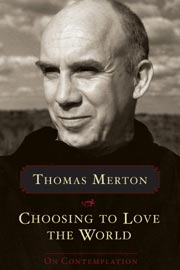 Thomas Merton compared her to Sophocles. That’s a stunning statement, to say the least, by Merton, because Sophocles certainly is the greatest of the Greek tragedians and a figure that kind of gives us the main texts in some ways of the Western world, the Oedipus trilogy, but I think that’s a bit extravagant, frankly. I think O’Connor would be not too well pleased to be put on that kind of not just pedestal but pinnacle. I would call her a major minor writer. By that I mean someone very important, but not a person of the very—I wouldn’t put her with Dante or Shakespeare or with Sophocles. I’d put her with people like, for example, Gerard Manley Hopkins, the great Jesuit poet of the 19th century, Evelyn Waugh, the great Catholic novelist of the 20th, Claudel, Bernanos, the great French writers. But I would add to that something that can’t be said of any English Catholic or any French Catholic, and that is Flannery O’Connor is the only great Christian writer this nation has produced. That’s an astonishing fact, when as Chesterton said this is the nation that has the soul of a church, the nation that has more churchgoing people than any other industrialized advancement, and yet name our major writers, Emerson, Thoreau, Hawthorne, Melville, Twain, Emily Dickinson, Frost, Stevens—not one of them Christian, at least not orthodoxly Christian. There are points in which their work certainly has Christian quality, especially in Emily Dickinson, but you would not call any of them a Christian writer. So you have this one figure, and again on the edges of American culture. She’s a southerner and a Catholic, she’s not at the center of American culture, and yet she is our only great Christian writer. That’s a claim large enough, it seems to me.
Thomas Merton compared her to Sophocles. That’s a stunning statement, to say the least, by Merton, because Sophocles certainly is the greatest of the Greek tragedians and a figure that kind of gives us the main texts in some ways of the Western world, the Oedipus trilogy, but I think that’s a bit extravagant, frankly. I think O’Connor would be not too well pleased to be put on that kind of not just pedestal but pinnacle. I would call her a major minor writer. By that I mean someone very important, but not a person of the very—I wouldn’t put her with Dante or Shakespeare or with Sophocles. I’d put her with people like, for example, Gerard Manley Hopkins, the great Jesuit poet of the 19th century, Evelyn Waugh, the great Catholic novelist of the 20th, Claudel, Bernanos, the great French writers. But I would add to that something that can’t be said of any English Catholic or any French Catholic, and that is Flannery O’Connor is the only great Christian writer this nation has produced. That’s an astonishing fact, when as Chesterton said this is the nation that has the soul of a church, the nation that has more churchgoing people than any other industrialized advancement, and yet name our major writers, Emerson, Thoreau, Hawthorne, Melville, Twain, Emily Dickinson, Frost, Stevens—not one of them Christian, at least not orthodoxly Christian. There are points in which their work certainly has Christian quality, especially in Emily Dickinson, but you would not call any of them a Christian writer. So you have this one figure, and again on the edges of American culture. She’s a southerner and a Catholic, she’s not at the center of American culture, and yet she is our only great Christian writer. That’s a claim large enough, it seems to me.
I think the sacramental barrenness of so much American Christianity has failed to enliven the imagination of its products. I mean, for example, the Hispanic maid in my building at Baylor is a woman who is not literate, yet she knows the whole Christian story because she has seen it figured in images in her Catholic church. She’s greatly impressed that I’m named after the archangel Raphael, so she’s picked up by osmosis, just by breathing in the sacramental, imagistic world of her Catholicism, a kind of richly imaginative way of construing the world. But the church in America has been too often a reflection of America. It has not been sufficiently countercultural. It was not at the places where it should have stood over against the culture with a kind of prophetic witness that would make writers of the caliber of the ones I mentioned pay attention. I mean, Mark Twain was horrified by slavery and Mark Twain’s a southerner. What were southern churches saying about slavery? Not much. Emerson, you know, winds up with a kind of Unitarianism that is so devoid of thick Gospel content that he can’t produce any kind of art that would be, again, profoundly Christian. So at both the political and the intellectual level I think the church has failed to provide an alternative that would really, again, arrest the attention of our brightest, ablest, most imaginative thinkers. That’s why Hawthorne is drawn to the Puritans. The Puritans at least tried; they may have gotten it wrong, but he takes them way more seriously than he does the experiment at Brook Farm, where everybody went around saying “how’s your Over-Soul?” and things like that.
Thomas Merton’s influence is more directly political. He was a fierce opponent of the Vietnam War. He, together with Dorothy Day, who also exercised an equally important influence on American culture, it seems to me, if not more important, because her work survived through the Catholic Worker Movement. In fact, the joke was that after Merton’s death a lot of Cistercian monasteries said hurray, at last we don’t have all these people thinking they are called to be Cistercians because they’ve read Thomas Merton, so in some ways it’s as if his work had a kind of counterproductive effect. Merton’s influence, it seems to me, is scattered. It has political effect. He’s very good about retrieving Cistercian mystical thought, hugely. His book New Seeds of Contemplation is, to me, one of the great books of mystical literature in our time. He writes very good poetry, but not poetry of the highest order. His essays, I think, are the essence of his work. In that regard he’d be more like Wendell Berry. I’d compare Merton to Berry. Berry is our best Protestant and Baptist essayist. I think Merton was probably our best Catholic essayist, but O’Connor moves in a different realm. She moves in a different realm, and that is a realm that’s not simply prose fiction on the one hand, nor kind of elevated insight on the other hand through essays, but the reconfiguration of everything through the lenses of the Christian faith. She liked to quote Conrad. Conrad said the function of a writer is to make the audience see. To make the audience see, and by “see” O’Connor interpreted that to mean not simply figure out that’s an oak and that’s not a hickory, not simply some kind of realism, but to have vision. Sight is one thing. Sight is simply to use the eye as a kind of ocular organ for perceiving furniture, lamps, and the like. But the eye when seeing through, seeing something behind it informed by the Christian faith, and it becomes a lens for beholding what she calls “distances” that are far off close up. Then you’ve accomplished something. That’s what she does. She’s prophetic in that sense. She says I’m a realist of distances, not a realist of surfaces or a realist of appearances, but a realist of distances—trying to bring that which is far off close up. It was far off, of course, as the transcendence of God, the otherness of God, the sinfulness of human nature that goes unrecognized and so forth. I don’t think Merton ever accomplishes anything that great, and that’s why I think she will last in a way he won’t.
Already we’ve seen downturns and upturns in O’Connor’s reputation. There was a while where her work was held in a good deal not just of suspicion but disdain, because of the way in which her characters do, when appropriate, and only when appropriate, use the N word, in the way in which she was dismissed, I’m afraid, about people in high places, as a Catholic, and therefore in her own way a fundamentalist. I know people who call O’Connor a fundamentalist, which means she believes in the basic doctrines of the church, so that there have already been ups and downs, but what we’re in now in the midst of is a new kind of resurgence that I think will continue. It will have its low points, I don’t doubt that it will, but she said even if it takes 200 years for my work to be appreciated that’s okay. My Catholic friends said remember for us a thousand years isn’t a very long time. And so if there is a thousand years, I think O’Connor will be appreciated a millennium from now.


